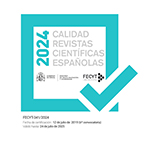La comunicazione epistolare come metafora della scrittura in un romanzo di Carmen Martín Gaite ed uno di Antonio Tabucchi
Abstract
The epistolary novel, as a genre, presents a remarkable degree of self-awareness regarding the communication process through which it acquires a peculiar metaliterary status: the narrative representation of the interplay between an addressee calls into question the author’s communicative proposal and the literary perspective from which he creates his own audience. Through the analysis of the constants and variations with respect to the genre’s codified conventions, I propose a comparative reading of two novels of the last decade, a spanish one (Nubosidad variable by C. Martín Gaite) and an italian one (Si sta facendo sempre più tardi by A. Tabucchi) in which I will point out two anthetical visions of contemporary writing, as to say two different aesthetical manifestos, that seem to find their best way of expression along the epistolary model. The utopic construction and apparition of a dreamed addresseeDownloads
Article download
License
In order to support the global exchange of knowledge, the journal Cuadernos de Filología Italiana is allowing unrestricted access to its content as from its publication in this electronic edition, and as such it is an open-access journal. The originals published in this journal are the property of the Complutense University of Madrid and any reproduction thereof in full or in part must cite the source. All content is distributed under a Creative Commons Attribution 4.0 use and distribution licence (CC BY 4.0). This circumstance must be expressly stated in these terms where necessary. You can view the summary and the complete legal text of the licence.










